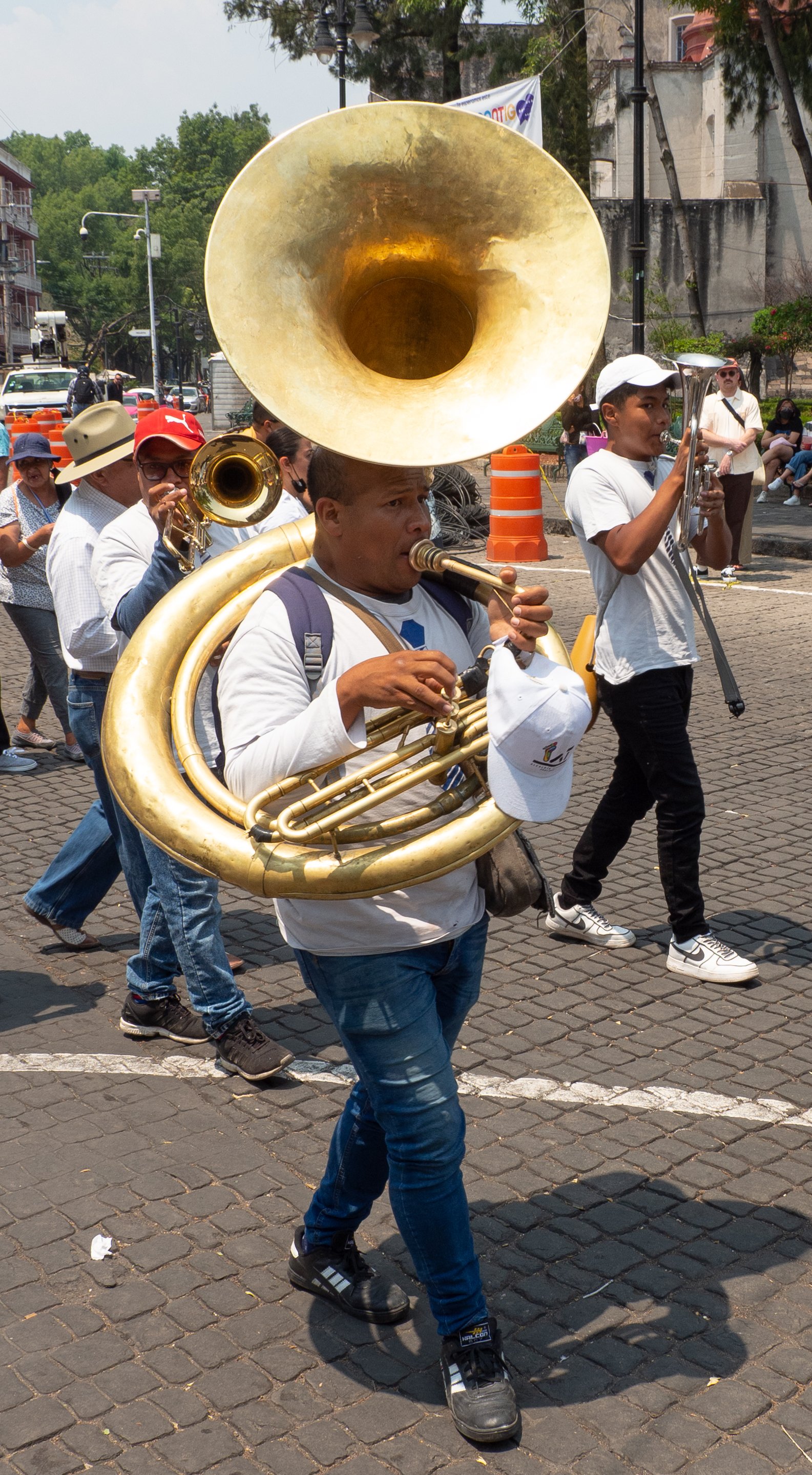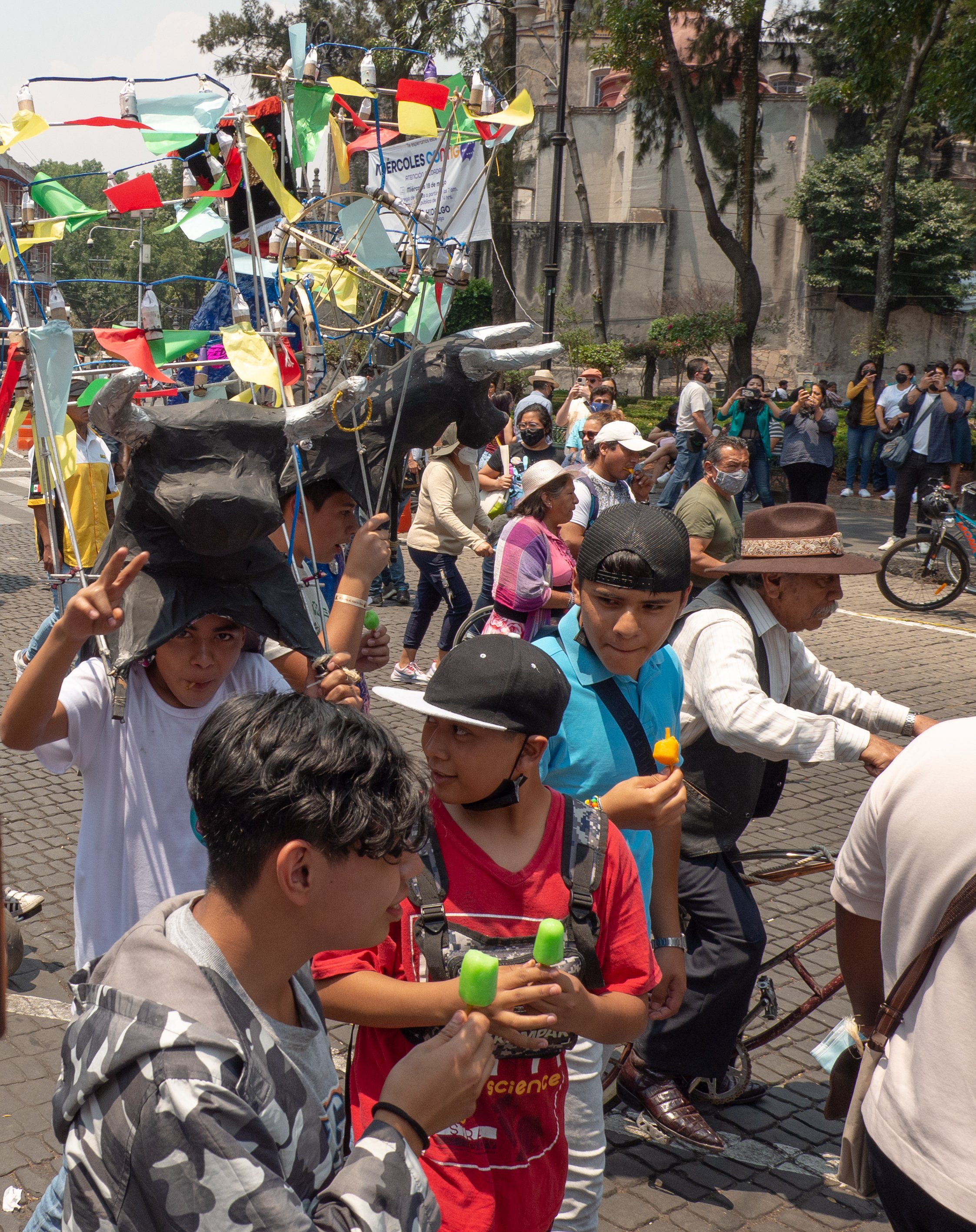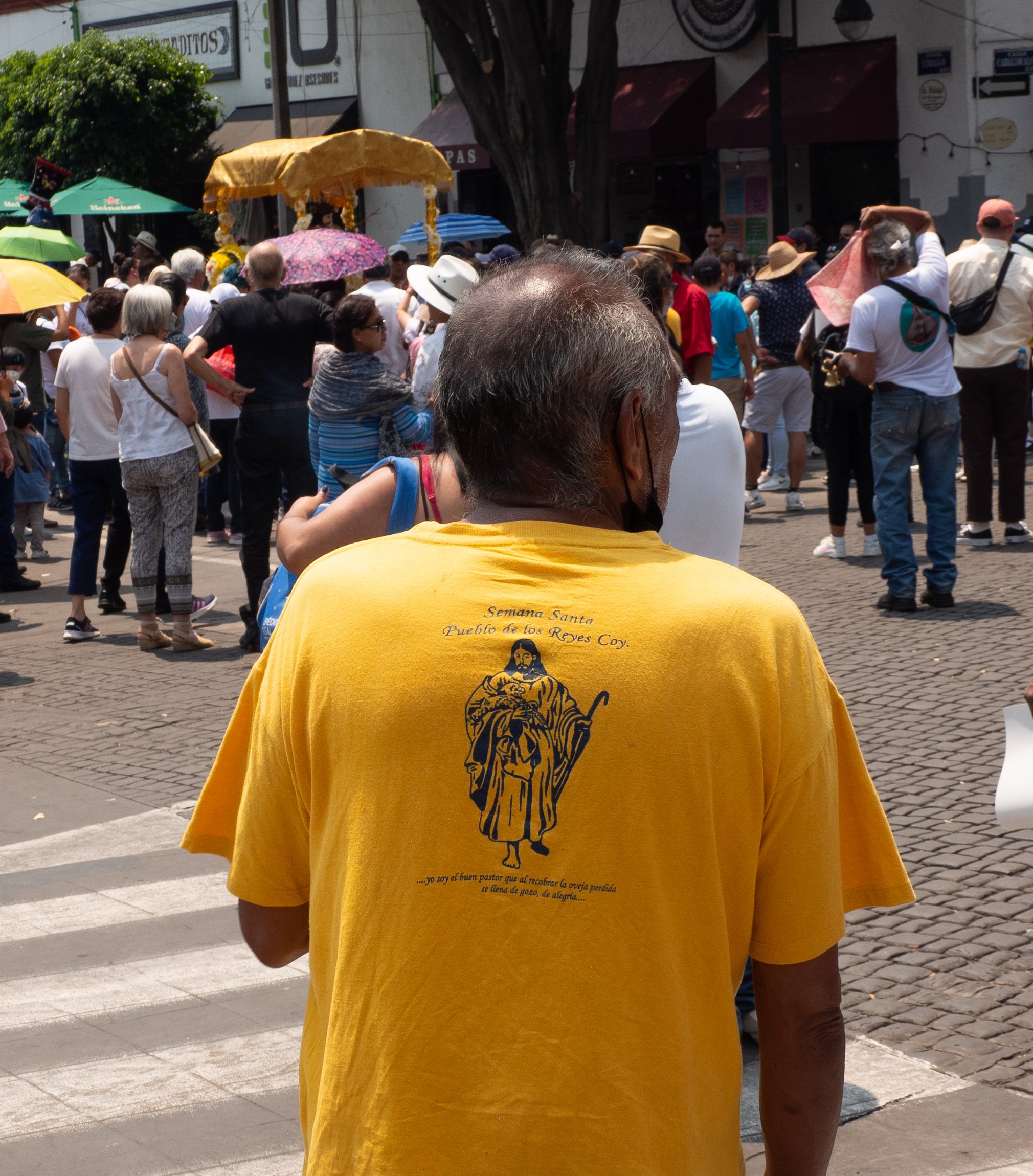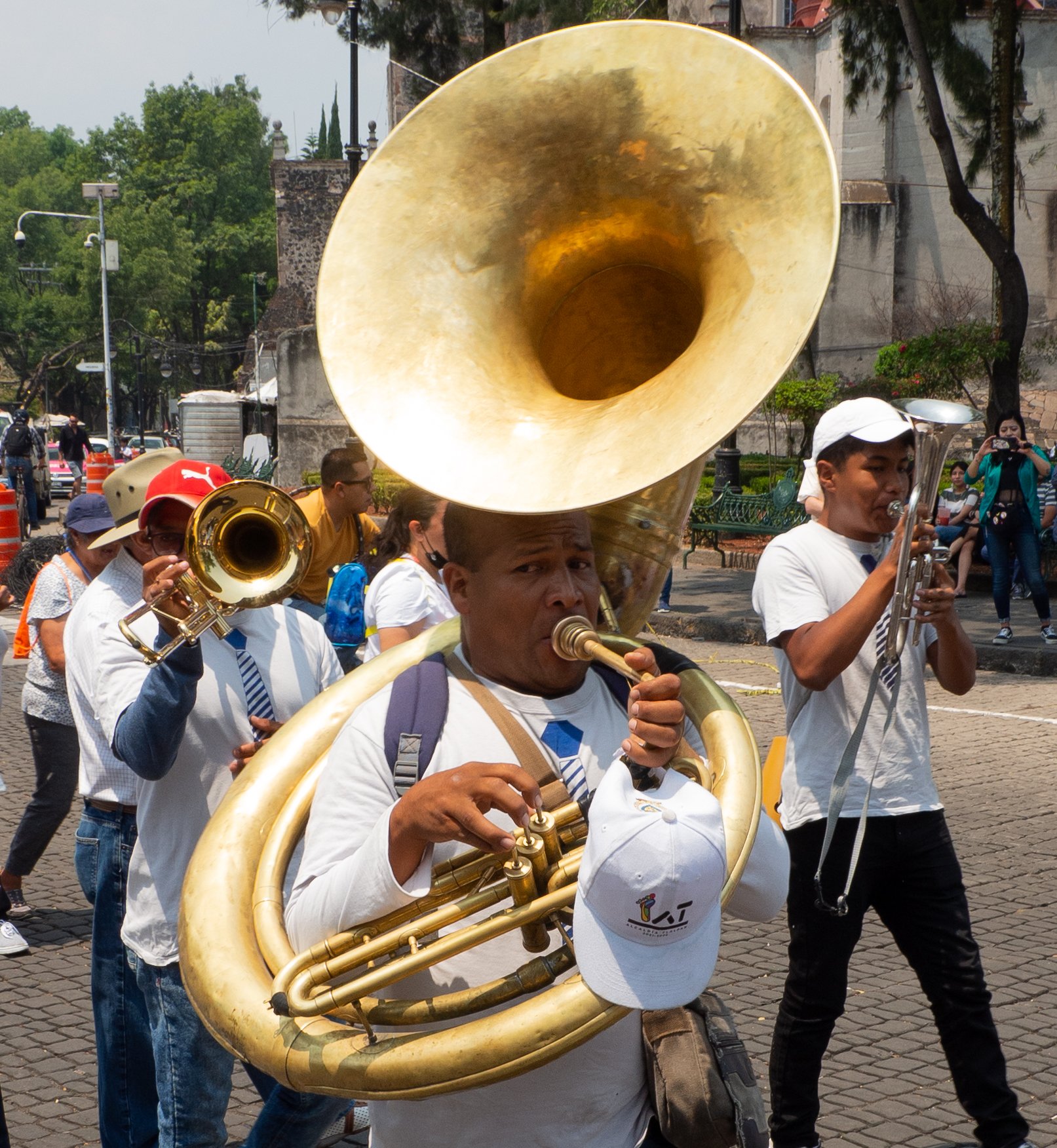Resistencia Indígena.
The morning news recited by young, smiling anchorwoman read like a blend between war dispatches and the Book of Revelation. A heavy smog alert; indigenous people blocking highways in order to obtain better security; the security forces going on strike over pay; mass robberies on commuters caught in traffic jams and in shops; and, just before the weather, a possible volcanic eruption. As we dug into platefuls of huevos norteños we started to wonder what on Earth we’d gotten ourselves into. Mexico City didn’t seem like having a happy Monday.
Yet, no one seemed to have told the Mexicans themselves. The city might be sinking under its own weight; both crime statistics and air quality might be eye-watering, but everyone seemed to be anything but downbeat. It might’ve been a case of re-arranging the deck chairs while the ship sinks, but as we dove deeper into Centro’s orderly grid of streets, we only met people going about their business with a spring in their step. Men and women with thick, jet-black hair walked with a sense of purpose. Even the omnipresent policewomen softened their bulletproof vest-and-riot shield ensemble with a dab of colourful make-up or a silken white ribbon in their coiffured hair.
South of the hardware stores and informal markets that gravitated around the Zocalo was the village-like atmosphere of Coyoacán. The central square, where once Cortés had resided while the Aztec empire was in its death throes, is sufficiently far from Frida Kalho’s home to be safe from excessive hipsterism and so processions to Saint Rita – with their corollary of brass bands and fireworks – can still go on.
We intercept, between the crackling of petards and thumping of sousaphones, morsels of conversation. They’re conducted in a Spanish that, in its journey westward, has lost the coarse rapidity of its Iberian ancestor, gaining instead a soft, musical tone. As we eavesdrop on the taco vendeuse chatting to her customer we start wondering if an accent can be described as ‘caring’.
It's the start of the rainy season and, every afternoon, dark cumulonimbi cruise above the city, dragging long tentacles of rain in their wake. As soon as one aims for us we seek shelter in the nearest market – you’re never too far from one, or so it seems – feasting on blue corn flatbread and colourful vegetables while cascades of water rumble against the metal roof. Once the noise abates we re-emerge, stunned, onto a sodden streetscape covered in torn tree branches. Yet all the street vendors are already back at it, chopping cilantro and onions as if it wasn’t a big deal.
Few words are as misused as ‘resilient’, these days, but I struggle to find any other adjective to pin on Mexico City’s collective lapel. From traffic to weather to crime, to say nothing of the events of the last 500 years, the denizens of this city had a lot thrown at them and yet they always managed to come through. Everywhere we look, from the speed with which tarps are deployed against thunderstorms to the cable cars linking colonias clasping to the side of steep hills, there’s more and more proof of Mexicans striving to overcome challenges. But, perhaps, the most evocative sign was painted on the side of a highway heading north.
Between the asphalt and a neat row of houses climbing uphill is a containment wall, an enormous concrete canvas that has been painted dark, lush green. On it jaguar warriors, priests in elaborate headgear and women in resplendent attires are caught in a frenzied dance. It’s such a vivid image that one would expect to hear the drums and the jingling of jade necklaces. On one side the artist has added, in a flowing cursive, the words Resistencia Indígena.
My history schoolbooks were considerably light on the ‘other side’ of the Columbian Exchange. As every Italian student I learned how Europe got corn, squash, tomatoes and tobacco while, on the other hand, giving pork, horses and the wheel. What it forgot to mention were conquest, subservience and wave upon wave of epidemics like this continent had never seen. In the face of all this it’s not hard to say that, perhaps, the biggest proof of Mexico’s resilience is the fact that it nonetheless exists.
Even its name – Mexico – is proof. What the conquistadors rechristened New Spain for 300 years now bears the name of the people that were subjugated by Cortés, for Mexica was how the Aztec called themselves. Even the symbol at the centre of the tricolour flying over the Presidential palace is a throwback to the people that once ruled here. It was the sight of an eagle, sat on a cactus, eating a serpent that convinced the Mexica that, yes, this island in the erstwhile Texcoco lake was their place to be.
The artist who painted that mural might’ve meant something more radical and militant, but in my mind resilience and indigenous resistance morphed into a single concept, an idea whose manifestations I started seeing all around us. Far from having been extirpated like bad weeds, the culture of the days of yore still echoes, adapted and evolved, in today’s Mexico City. I can see it in all its beauty and contradictions, vibrancy and inconsistencies. There are dancing revivalists in the Zocalo, shaking their bird feather costumes under the stony eyes of statues hanging from the Cathedral. There’s a clear syncretism with the Christian religion itself, from the vibrancy of the colours of Jesus’ attire to the belief, held in some remote communities, that the Nazarene is the inventor of metals, cattle and money. And then there’s the language, where the idiom of Cervantes has picked up a fair share of Nahuatl loan words.
But perhaps there’s more. I don’t know where facts end and my wishful thinking starts, but the deeper I dip my toe in the enormous pool that is Latin America the more I notice a yearning for change. There are tantalising glimpses of different ways to govern communities. From forms of collective management in Mexico to the Bolivian ayllus, I see tentative steps to question the ways society has been governed for hundreds of years, attempts to rectify a top-down approach that, more often than not, wrought more harm than good.
It might be just me. It might be just my wild imagination, a delusion, but as we leave Mexico City I find myself wishing that resistencia indígena will come to mean something more than just mural art. I find myself wishing that this idea might, one day, shape a society that enables fair representation, land rights and equal access to public goods. Something that, for five centuries and counting, have not been granted to all Latin Americans.








